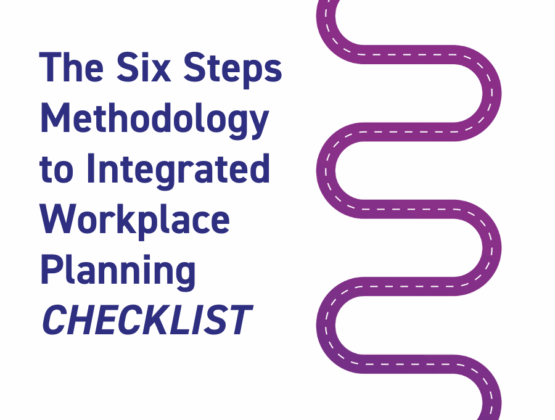Published by Skills for Justice
Five common mistakes to avoid in a workforce plan
Date 16.07.24

Workforce planning (and the act of developing a workforce plan) is fundamentally about building and sustaining the workforce needed to deliver an effective service. The process can help us understand what useful actions we can take in order to have the best chance of having the right number of people, with the right skills, in order to deliver public services in what is often a 24/7 working environment.
The alignment of supply (recruitment, training, and retention of people) and demand (performance, outcomes, and outputs) can enable organisations to grow and thrive.
Having worked with organisations across the four nations of the UK over the past two years, we’ve identified five areas that are commonly overlooked as issues or barriers to effective workforce planning and show how they can be avoided.
Five key areas of avoidable risk
1. Lack of clear aims
Consider these questions: Is there a problem you are trying to solve? What do you think a workforce plan will achieve? What evidence is informing your assumptions?
We often see organisations struggle because they haven’t fully considered what they aim to achieve by having a workforce plan – which results in a plan that fails to realise its potential benefits.
How to overcome: Set out what your aims are for the workforce plan and make it clear what you hope to achieve from it. Have measures by which you will judge if it is succeeding or not , and detail how you will monitor outputs and outcomes. This provides you with a method of tracking what you are working towards, and you’ll be able to see and evidence real success and improvement across the organisation. This helps not only you, but any stakeholder who needs to understand the value or outcomes of workforce planning.
2. Accountability – what are your roles and responsibilities?
A common error that we see is not clearly defining accountability and responsibilities. Often an organisation will decide that they need a workforce plan (perhaps they are required to do so, or to address a specific issue). However, a lack of clearly defined ownership can lead to an absence of transparency and visibility across the organisation. Ultimately, creating a plan without clear governance and individuals responsible for driving its success, will fail.
How to overcome: Don’t start or communicate a plan until everyone involved in its delivery is clear on their role. This will ensure there is a line of ownership and accountability from strategy to operational execution. Ensure everyone involved can access the plan and is given a sense of responsibility for its success. The strategic owner must see the value in a workforce plan and be prepared to sponsor and champion it long-term.
3. Analysis inertia
Over-analysing your workforce data can be counterproductive to a plan. Organisations are often sceptical about the quality and accuracy of its workforce data, which is understandable, but this can halt progress. We see organisations who decide to go deeper with data reconciliation or analysis at the expense of making any real progress in workforce planning. Being too cautious is not conducive to improvement and momentum.
How to overcome: Favour progress over perfection. Decision makers ought to be encouraged to reach sensible and proportionate decisions based on the current evidence presented. Appreciate the concept of risk vs reward and developing a tolerance to what is ‘good enough’ to make some progress. Lay out what the risks are if they go with a decision based on the information and the risks of doing nothing. If an organisation suspects it has a lack of a required skill and is faced with a decision to invest in training or not, it is important to weigh up the validity of the evidence vs the risk of no action. In this case it would seem a logical decision to go with the data presented and invest in the required skill. Don’t get bogged down in inertia.
4. Making plans inaccessible
Workforce planning can often become a very abstract concept that few people truly understand, including what it might achieve. This can result in plans being difficult to implement, monitor and track benefits from. Often plans will be presented as an attempt to achieve the right people, with the right skills, at the right time – or variations on this theme – without making it clear what that means within the organisation or service delivery context.
How to overcome: Document and be explicit with your aims and timeframes. Make a clear, concise outline of what your plan is and how you hope to bring about change. The Six Steps Methodology® is a great example of how to ‘frame’ this and make an abstract concept more tangible. This will allow you to stop becoming lost in conjecture, document strategy progress and, most importantly, see success. It is often helpful to structure a workforce plan around themes or domains relevant to the organisation. For example, recruitment, training, and retention are three broad areas common across most organisations and can be split into subcategories if useful.
5. Plans are disconnected from other functions
A workforce plan should not sit in isolation from other plans in the organisation. Too often we see workforce planning happening away from business and financial planning or other organisational strategy, instead of in alignment with it. This means at best that they’re not consistent or working in the same direction, or that there is a duplication of work, resulting in wasted time and resources. At worst it means the disharmony renders a workforce plan unsuitable to implement.
How to overcome: Set out how the workforce planning implementation works in tandem with the rest of the organisation. This aligned approach will allow greater benefits such as sharing of ideas, knowledge and experience. Commonly the workforce plan will start and end with colleagues in HR or the people function. Quite rightly, HR is a critical component of the workforce plan – but not in isolation. It’s particularly important to include operational and finance colleagues in workforce planning discussions, so it removes the risk of being developed without consideration of operational and financial impact.
Workforce planning can be difficult at times to implement and get right, but by starting with these fundamentals and trying to eradicate the common issues we’ve highlighted, your workforce plan will have the best chance of succeeding.
If you’d like to discuss how we can help with your workforce planning, get in touch with us today.
Get in touch
"*" indicates required fields






